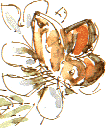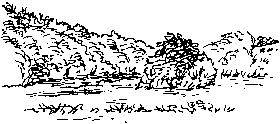Nature Diary
Rocks
History
Gallery
Home Page
 BROWN ANTS are active around the entrances to their nest in the cobbles by the Figure of Three locks. Winged ants are emerging, helped, and in some cases hindered, by the excited workers. Twenty yards further on, another colony of the same small brown species is also alive with activity. Apparently colonies over a wide area of countryside are prompted by some signal, probably linked to the weather, to release their winged queens (and accompanying males) simultaneously.
BROWN ANTS are active around the entrances to their nest in the cobbles by the Figure of Three locks. Winged ants are emerging, helped, and in some cases hindered, by the excited workers. Twenty yards further on, another colony of the same small brown species is also alive with activity. Apparently colonies over a wide area of countryside are prompted by some signal, probably linked to the weather, to release their winged queens (and accompanying males) simultaneously.
  Commas and Green-veined whites are on the wing in a sunny sheltered spot, by the brambles and the tall wasteground plants, at the edge of the wood. A Skipper visits Purple Loosestrife flowers in the marshy area in the park. Male Gatekeepers patrol their patch of bramble on the towpath.
Commas and Green-veined whites are on the wing in a sunny sheltered spot, by the brambles and the tall wasteground plants, at the edge of the wood. A Skipper visits Purple Loosestrife flowers in the marshy area in the park. Male Gatekeepers patrol their patch of bramble on the towpath.
 'Where are the swings?' a disappointed little girl asks us. A dog walker tells us they've been burnt, by the crowd who come into the park with their cheap cider after 7.30 on an evening. The park benches have also vanished. I think of the Lou Reed song 'Perfect Day' with the line about 'we drank Sangria in the park.'
'Where are the swings?' a disappointed little girl asks us. A dog walker tells us they've been burnt, by the crowd who come into the park with their cheap cider after 7.30 on an evening. The park benches have also vanished. I think of the Lou Reed song 'Perfect Day' with the line about 'we drank Sangria in the park.'
Other human activity in the last few weeks includes fifty tyres dumped in the lane at the top of Millbank, at the top of our 'chiff-chaff path', and the bulldozing of an area young trees planted as part of a reclamation scheme a few years ago. But this feels more like the work of a dodgy property developer than the cider and lighter fuel revellers. Human beings, don't you love 'em!
 We have lunch at Walton Hall, now the Waterton Park hotel, overlooking the lake which was at the centre of Charles Waterton's nature reserve. I'm delighted that my booklet on Waterton's Park is now on sale both here at Waterton Park, West Yorkshire, and at Waterton Lakes National Park, Alberta, thanks to the Waterton Natural History Association.
We have lunch at Walton Hall, now the Waterton Park hotel, overlooking the lake which was at the centre of Charles Waterton's nature reserve. I'm delighted that my booklet on Waterton's Park is now on sale both here at Waterton Park, West Yorkshire, and at Waterton Lakes National Park, Alberta, thanks to the Waterton Natural History Association.
 As we return back along the Balk, once a country lane, now a leafy suburban road, we narrowly miss a female Sparrowhawk which flashes out of a garden in front of the car.
As we return back along the Balk, once a country lane, now a leafy suburban road, we narrowly miss a female Sparrowhawk which flashes out of a garden in front of the car.
 A single Noctule bat, our largest species, flies alongside a wheeling flock of twenty Swallows at dusk.
A single Noctule bat, our largest species, flies alongside a wheeling flock of twenty Swallows at dusk.
| 
 Commas and Green-veined whites are on the wing in a sunny sheltered spot, by the brambles and the tall wasteground plants, at the edge of the wood. A Skipper visits Purple Loosestrife flowers in the marshy area in the park. Male Gatekeepers patrol their patch of bramble on the towpath.
Commas and Green-veined whites are on the wing in a sunny sheltered spot, by the brambles and the tall wasteground plants, at the edge of the wood. A Skipper visits Purple Loosestrife flowers in the marshy area in the park. Male Gatekeepers patrol their patch of bramble on the towpath. 'Where are the swings?' a disappointed little girl asks us. A dog walker tells us they've been burnt, by the crowd who come into the park with their cheap cider after 7.30 on an evening. The park benches have also vanished. I think of the Lou Reed song 'Perfect Day' with the line about 'we drank Sangria in the park.'
'Where are the swings?' a disappointed little girl asks us. A dog walker tells us they've been burnt, by the crowd who come into the park with their cheap cider after 7.30 on an evening. The park benches have also vanished. I think of the Lou Reed song 'Perfect Day' with the line about 'we drank Sangria in the park.' We have lunch at Walton Hall, now the Waterton Park hotel, overlooking the lake which was at the centre of Charles Waterton's nature reserve. I'm delighted that my booklet on
We have lunch at Walton Hall, now the Waterton Park hotel, overlooking the lake which was at the centre of Charles Waterton's nature reserve. I'm delighted that my booklet on  As we return back along the Balk, once a country lane, now a leafy suburban road, we narrowly miss a female Sparrowhawk which flashes out of a garden in front of the car.
As we return back along the Balk, once a country lane, now a leafy suburban road, we narrowly miss a female Sparrowhawk which flashes out of a garden in front of the car.